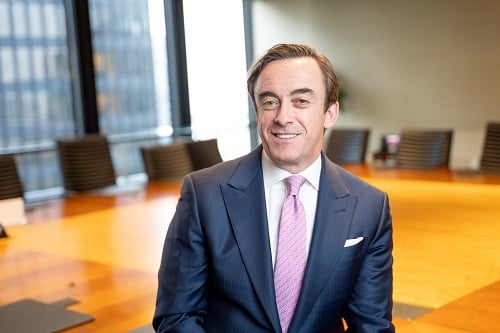Successful series B round brings in millions, now the firm’s Chief Product Officer explains what they plan to do with the money

Startup work is unceasing. After all the effort, stress, pain, and sacrifice that goes into securing a successful funding round, leaders get a few minutes to high-five one another only to face the fact that they need to put this new capital to work. That’s now the situation Conquest Planning finds itself in, with the recent closure of its Series B round bringing in $110 million in funding. That raise involves major investments from giants like Goldman Sachs and Citi, as well as a host of big names in the venture capital space. With this capital onboard and these partners at their back, Conquest’s Chief Product Officer explains what comes next.
Ken Lotocki stated the two core goals for Conquest following their raise: expand in the US market and improve the capabilities of their platform. He outlined how the firm is now planning to achieve both goals. He noted how the US expansion fits into Conquest’s existing aims to serve and grow among Canadian advisors. He highlighted, too, how Conquest’s platform is built to facilitate expansion in different countries without becoming an undue distraction from their Canadian market.
“We’ve future proofed ourselves. We learned early on that when you start breaking into the US you can end up with two completely separate versions of the platform. We’ve architected our system so that when we build things, we build them once and we then localize accordingly,” Lotocki says.
The new capital injection aimed, in part, at US expansion also comes with US expertise. Lotocki notes that Jade Mandel, Managing Director at Growth Equity at Goldman Sachs Alternatives will be joining Conquest Planning’s board of directors along with her firm’s equity investment. Mandel, as well as some of the other US-based venture leaders already involved with Conquest, should help bring expertise in that market that Conquest can leverage as part of their efforts. Lotocki notes, too, that Citi’s investment began as a possible client relationship and that Conquest may be playing a role in some of Citi’s plans for the future of financial services in the United States.
Those US clients, Lotocki explains, aren’t looking to add one tool to their existing roster. The goal is tool consolidation, limiting the number of products used and ensuring that those products can do more. That means, in effect, their two goals of adding features and expanding in the US are mutually-reinforcing. Conquest is adding more ultra high net worth features on the Conquest platform, as both US and Canadian firms are targeting that market with the goal of building lifelong client relationships.
To that end, Conquest is building an estate planning module they aim to launch later this year. The aim is to offer clients a dynamic pre and most-mortem planning service that allows them to factor in legacy goals, philanthropic gifts, and inheritances. They see estate planning as a growing necessity among the ultra high net worth client set, as well as a growth opportunity among mass affluent and other mass market clients in the US and Canada. They’re building the estate planning module agnostically, and adding country-specific details after the fact in order to maintain that degree of consistency across their markets and ensure that the demands of a US expansion don’t distract them from their Canadian clients.
Lotocki says that Conquest will also be using some of their new capital to add more generative AI capabilities into the platform. He notes the planned addition of an AI assistant named “Sam” which can help with onboarding, navigation, plan analysis, and other more day-to-day functions. The goal is for Sam to help find the specific pieces of information that are most pertinent to a given task, allowing advisors to go deeper on their investigations faster.
As they expand their platform’s capabilities, Lotocki says his team is looking towards compliance, regulations, and the risks around scope creep for advisors as well. Estate planning, for example, is an area where an advisor’s work could stray towards legal advice quickly. The goals in their estate planning module, however, are strictly within the parameters of what an advisor can do. Helping them with the investment management and information gathering sides of estate planning work, and helping to highlight where estate lawyers need to be consulted.
Despite their lofty goals, cash injection, and focus on expansion in the US market, Lotocki stressed that Conquest is keeping its eyes fixed on the Canadian market. He stresses that the collaborative approach that helped get Conquest to this point will be maintained, and that Canadian advisors’ needs will be emphasized by his firm’s leadership.
“We have built ourselves an opportunity to continue to collaborate and work very closely with our users,” Lotocki says. “I am not a financial advisor, so I want to work and collaborate with every single one of our partners — down to the single user — to understand if we’re working on the right things. When we’re talking to someone in the US, the UK, or Canada, we want to know what the problem is that we’re trying to solve.”



